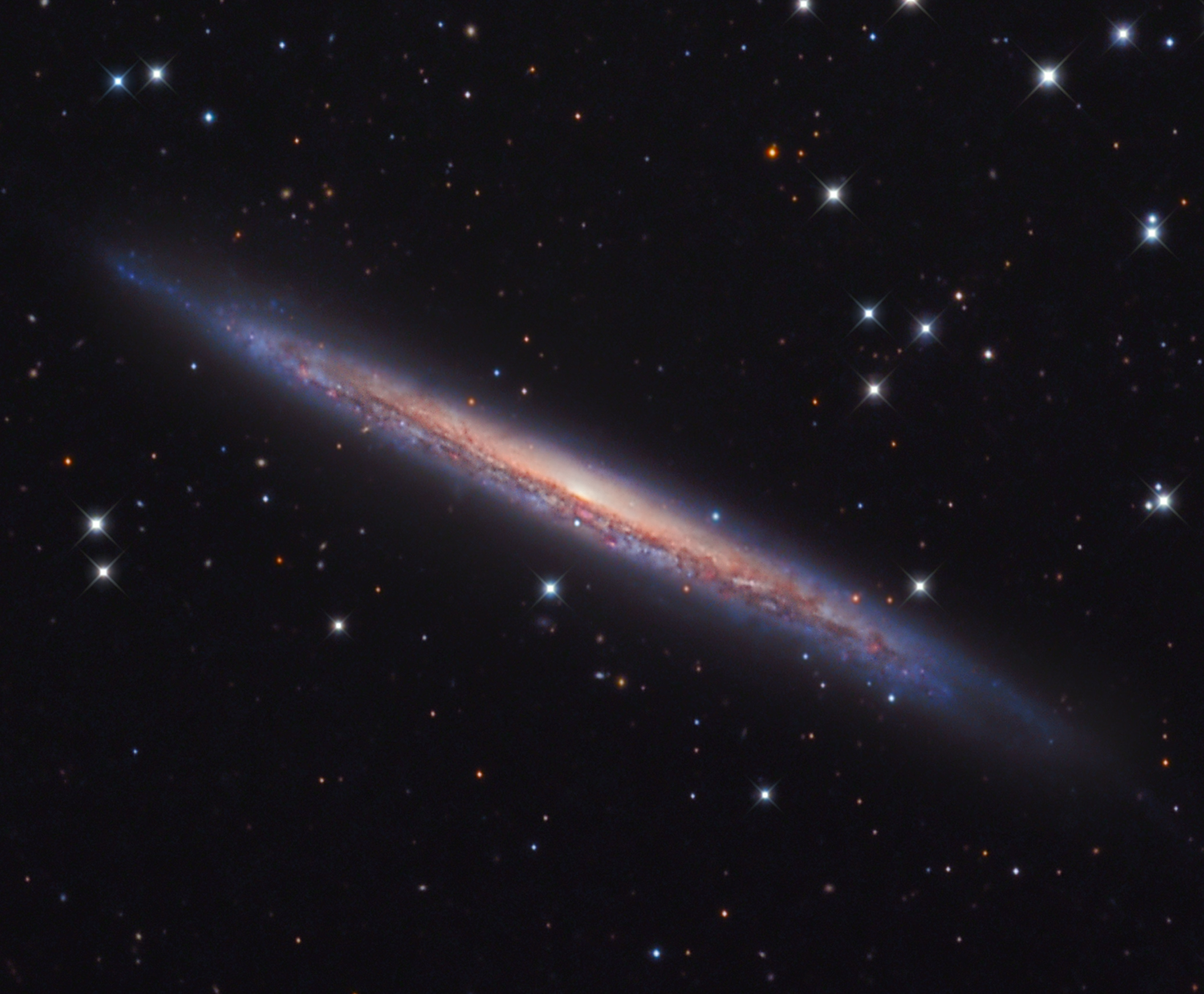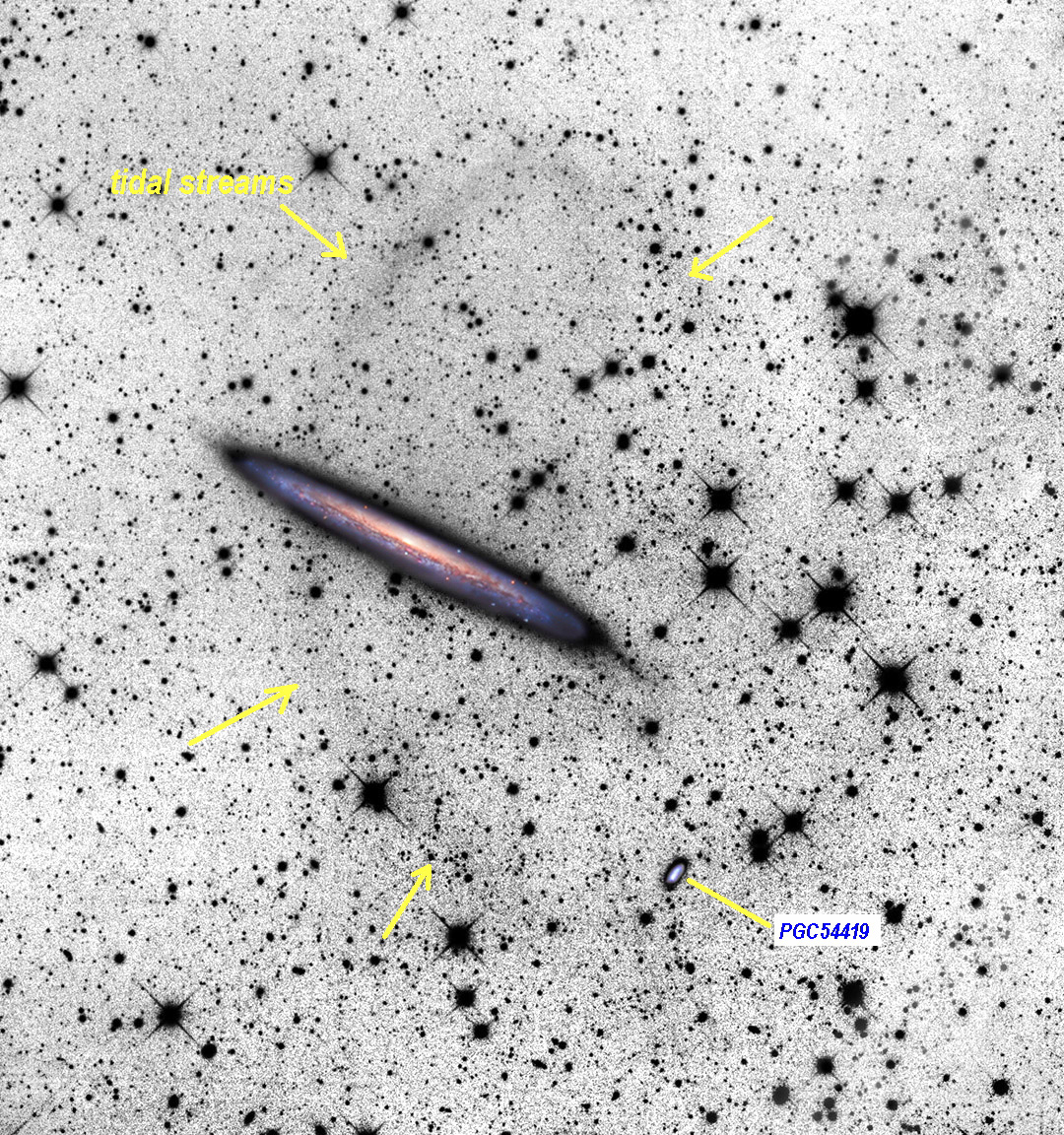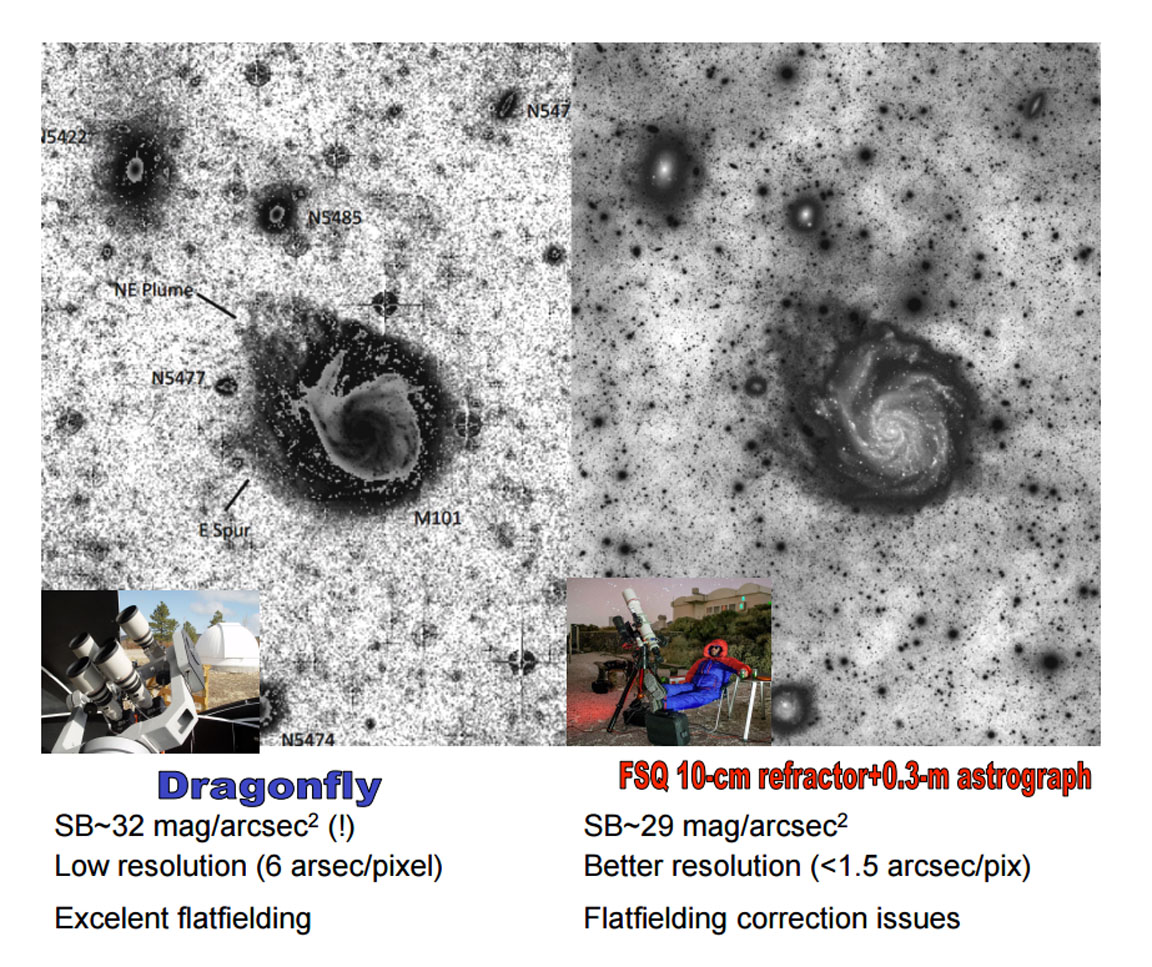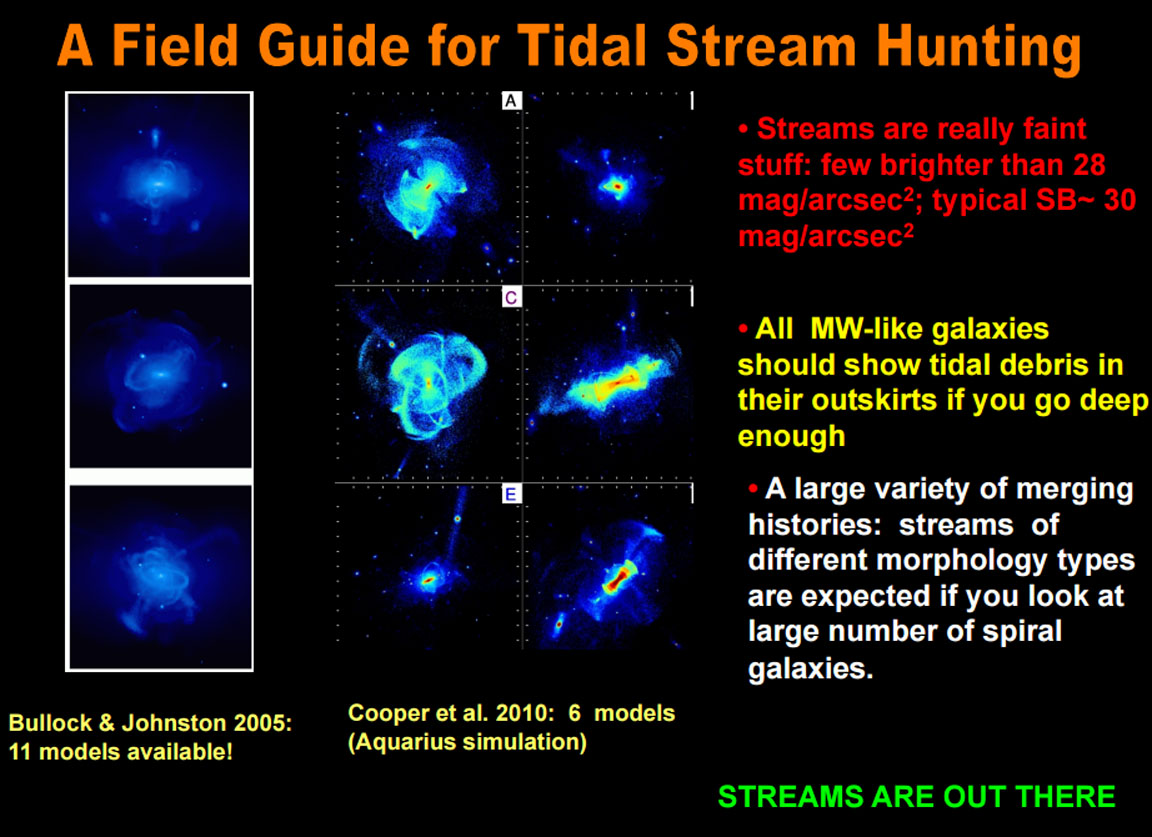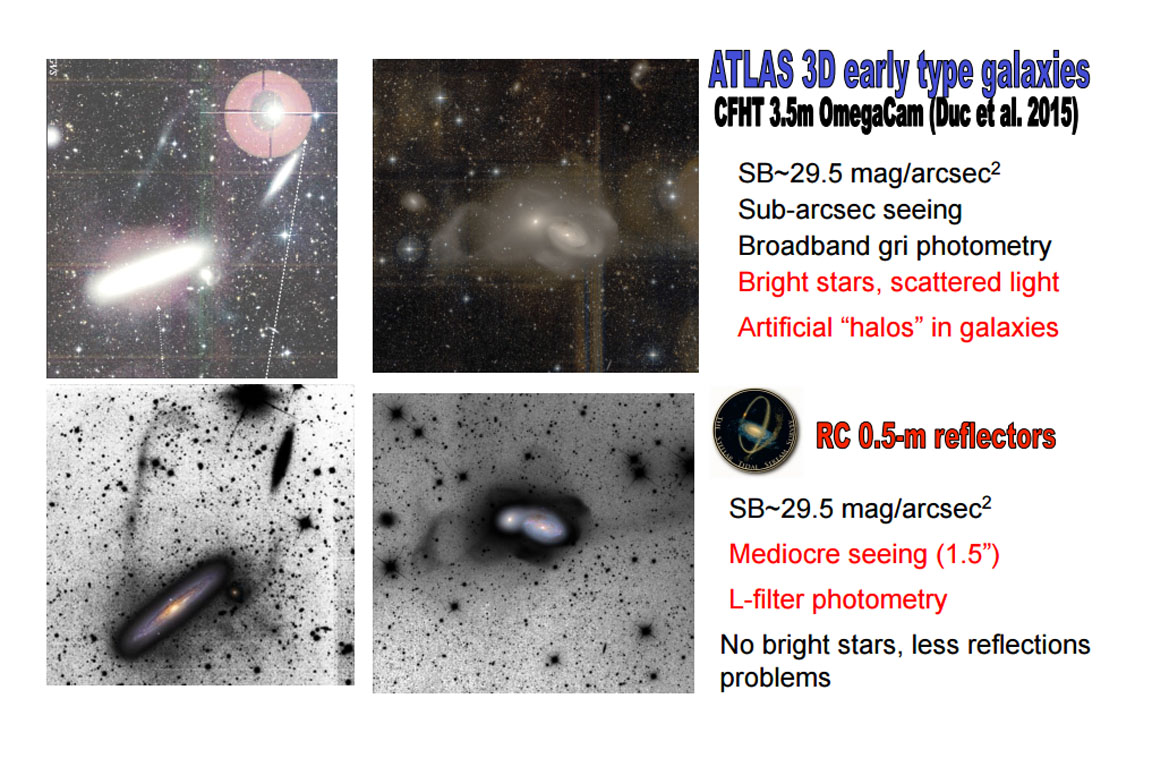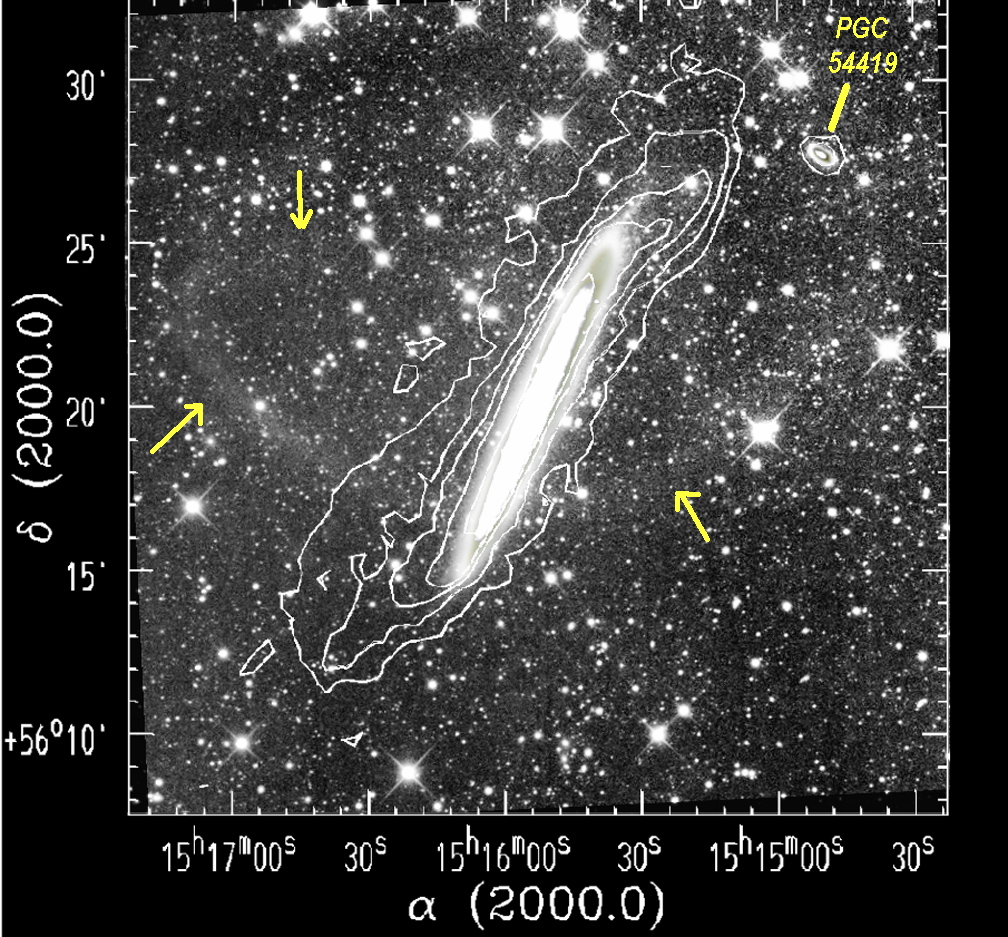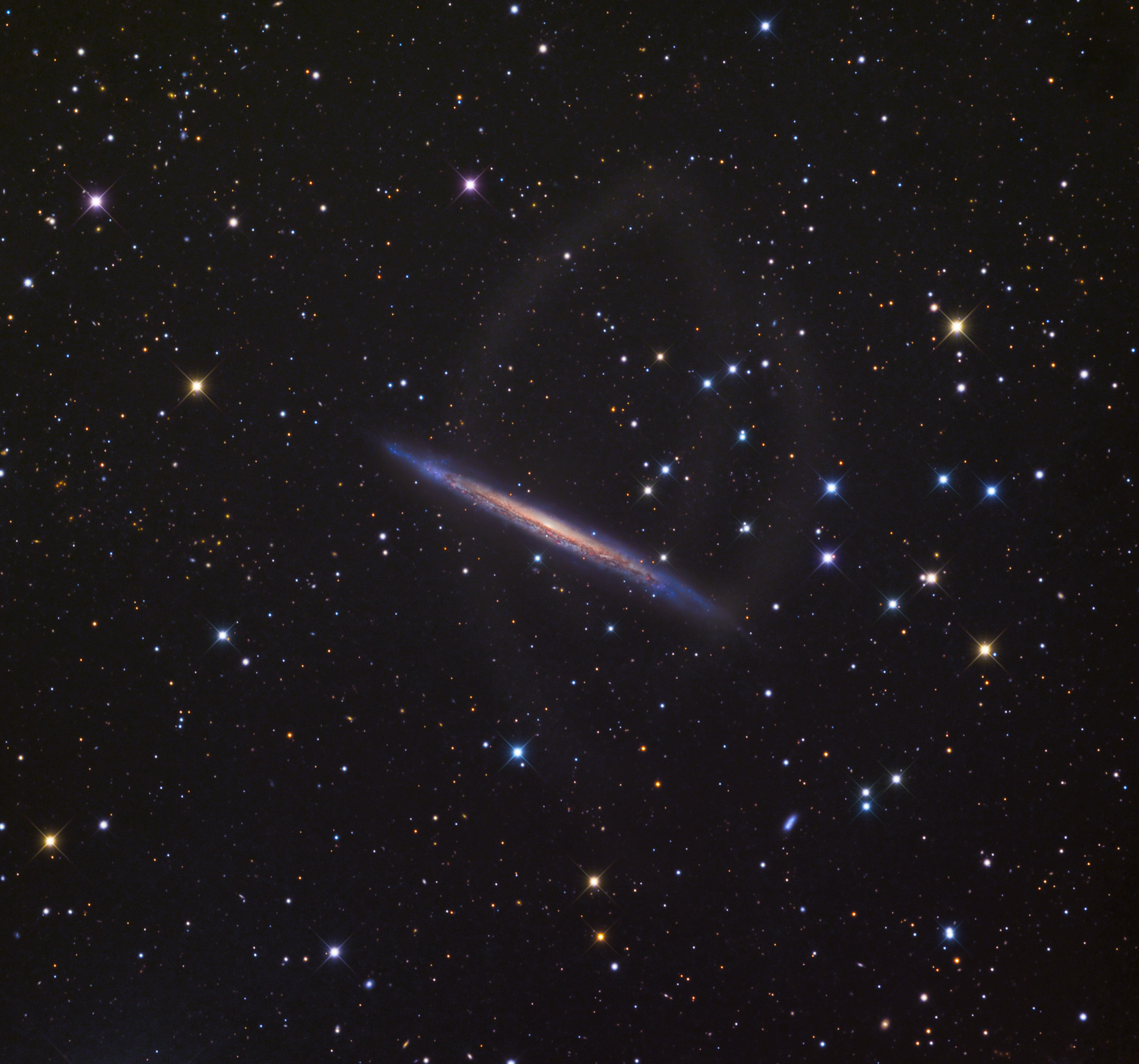
Heading to the 2016 Chiefland Star Party and looking forward to visual observing and imaging during cool nights under the stars! And seeing old friends and making new ones while sharing astro warstories about efforts to see Einstein’s Cross or record globulars around distant galaxies. Dark and steady skies help make these things possible.
Just how dark and steady are the CAV skies? The attached 26 hour LRGB time exposure of the edge-on Draco galaxy NGC5907 may help answer that question. My close-up image taken with my 14.5-inch Ritchey-Chretien telescope and Apogee U16M CCD Camera shows fine details in the dust lanes and HII regions are easy to pick out in this 11th magnitude galaxy 50 million light-years out! The same data stretched yields gravitational tidal star streams made famous by Jay Gabany now being intensely studies by professionals like European astronomer Dr. Martinez-Delgado which may hold the key to solving some “missing substructure” problems of galaxy formation cosmological models. My “widefieldNGC5907” and “NGC5907invert” images show the faint stellar streams and satellite galaxy PGC54419. Steady skies allowed me to capture this resolution; dark skies made it possible to go DEEP! Most galaxies are likely to have previously undetected stellar debris tails. Go deep and good luck ferreting them out! Go where no one has ventured before!
……. see you at the star party ……Bill W.
NOTE —- Anyone crazy enough to want to know more about stellar streams and how to record them, read below (at your own risk)!
The telescopes, CCD cameras and computers available today allow amateur astronomers to push the frontiers of knowledge of the universe, especially as relates to going DEEP (recording extended faint objects). This statement would seem like an exaggeration since it is obvious that larger professional telescopes could record fainter stars than is possible with amateur-size telescopes. What is surprising, though, is the advantage amateurs have when recording ultra low surface brightness objects such as galactic tidal streams. Bigger isn’t necessarily better. Amateur Jay Gabany excited the astro community in 2006 recording large-scale tidal streams around Draco galaxy NGC5907 (link below). His deep images caught the attention of professional astronomers such as Dr. Martinez-Delgado that utilized his images to explain why so many galaxies appear unperturbed (without tidal debris that is expected theoretically to be there) — because their debris streams have ultra low surface brightness and haven’t been detected before. Jay used long exposures, dark skies, good flat-fielding and unique processing techniques to bring out these faint features. Gabany reached approx. 28 mag/arcsec2 which was deep enough to detect tidal streams around a number of closer galaxies. But it soon became apparent that many galaxies would likely have streams at 30 mag/arcsec2 and fainter and that we needed techniques that would break the 28 mag/arcsec2 barrier. Long exposure film and CCD imaging seems to have hit a surface brightness “ceiling” at about 28-29 apparently because of systemic problems (flat-fielding, reflections, ghosts, diffraction noise) inherent in compound telescopes. Large professional telescopes suffer disproportionately. Just look at all the artifact reflections and haloes and ghosts in the Canada-France-Hawaii Telescope (CFHT) images!!!! Imagine trying to detect faint extended stellar debris through all that noise?? Forget about it! Ultra low surface brightness objects demand clean, uniform, noiseless backgrounds with near-perfect flat fields — perhaps a scope, camera and software that only exists in dreamland.
A solution was proposed by collaborating astronomers in Univ of Toronto and Yale Univ. They created the “Dragonfly Telephoto Array” imager which consists of a number of very high quality Canon 400mm f/2.8 telephoto lenses with specialized nano-fabricated high through-put coatings coupled to SBIG STL 8300 CCD cameras all simultaneously recording the same object. With integrations of 50-100 hours, this Dragonfly system should be capable of probing structures with surface brightnesses of below 32 mag/arcsec2!!!!!! This degree of depth may penetrate into the private world of previously hidden galactic “missing substructure” predicted to be present around most galaxies by cosmologists! The Dragonfly Array is operational at New Mexico Skies (see link below). This thing looks like science fiction! This is effectively a near-perfect 14-inch baffled refractor at f/1 with no diffraction, light scatter, ghosting and a truly flat 2.6 degree field. The system is described in detail in an article (first link below) and is FASCINATING reading especially for imagers!!!!
My 14-inch RCOS telescope suffers from diffraction light scattering, ghosts, collimation errors, dust donuts, and poor flat fielding, to name a few. The light pollution dome from Chiefland to the north does not help. Nevertheless, I have recorded down to approx. 27-28 mag/arcsec2 capturing some of the tidal tails around NGC5907! My attached 26 hour LRGB exposure shows HII regions and considerable detail in the dust lanes, resolution not attainable by the Dragonfly Array! My widefield image shows the tails with a background of myriads of distant galaxies but very little if any galactic cirrus (unlike the M81 field). An inverted image better displays the tidal tails which are at least in part due to satellite galaxy PGC54419 at the lower right. The ends of the main galaxy can be seen “warped into an integral shape” and this is best seen in the “isophote” version. A 1998 article about NGC5907 utilized isophotes to illustrate the warp. The attached “isophotes” image is my data with superimposed 21 cm radiotelescope isophotes! Cool! Longer time exposures using my telescope and camera probably will not reveal more depth. Perhaps if I used 100 flats (as recommended by Swiss amateur Fabian Neyer) could I make incremental gains. I will leave it up to another Chiefland astronomer to create his own “CAV Dragonfly Array”. I’ll stand by my RCOS “Rosita”!.
P.S. – The “Dragonfly”, “CFHT” and “Streams” charts included in this e-mail are from 2015 The Stellar Tidal Stream Survey talk given by Dr. Martinez-Delgado (Univ. of Heidelberg)
https://arxiv.org/pdf/1401.5473.pdf – Great Article on Ultra Low Surface Brightness Imaging with Dragonfly Telephoto Array
http://www.nmskies.com/ – Check out this Dragonfly ARRAY!!!!
http://apod.nasa.gov/apod/ap080619.html — 2008 APOD — lots of Photoshop dodging!
http://iopscience.iop.org/article/10.1086/311563/pdf — Great 1998 article – cool isophotes!
http://iopscience.iop.org/article/10.1086/300866/fulltext/ — surface photometry of NGC 5907
https://arxiv.org/pdf/0805.1137v2.pdf – Fantastic 2008 article!! See deepest images in Figures 1 & 2!!
http://www.cosmotography.com/images/ngc5907_confirmation.html — Independent confirmation image from Greece!
http://www.solstation.com/x-objects/sag-deg.htm — Milky Way may have similar tidal streams!
http://www.nature.com/nature/journal/v477/n7364/full/nature10417.html — Milky Way could look like NGC 5907?!
http://iopscience.iop.org/article/10.1088/0004-6256/150/4/116/pdf — Tidal Stream Around Whale Galaxy!!!
http://www.cosmotography.com/images/dmd_04242010_stream.pdf — Landmark article
